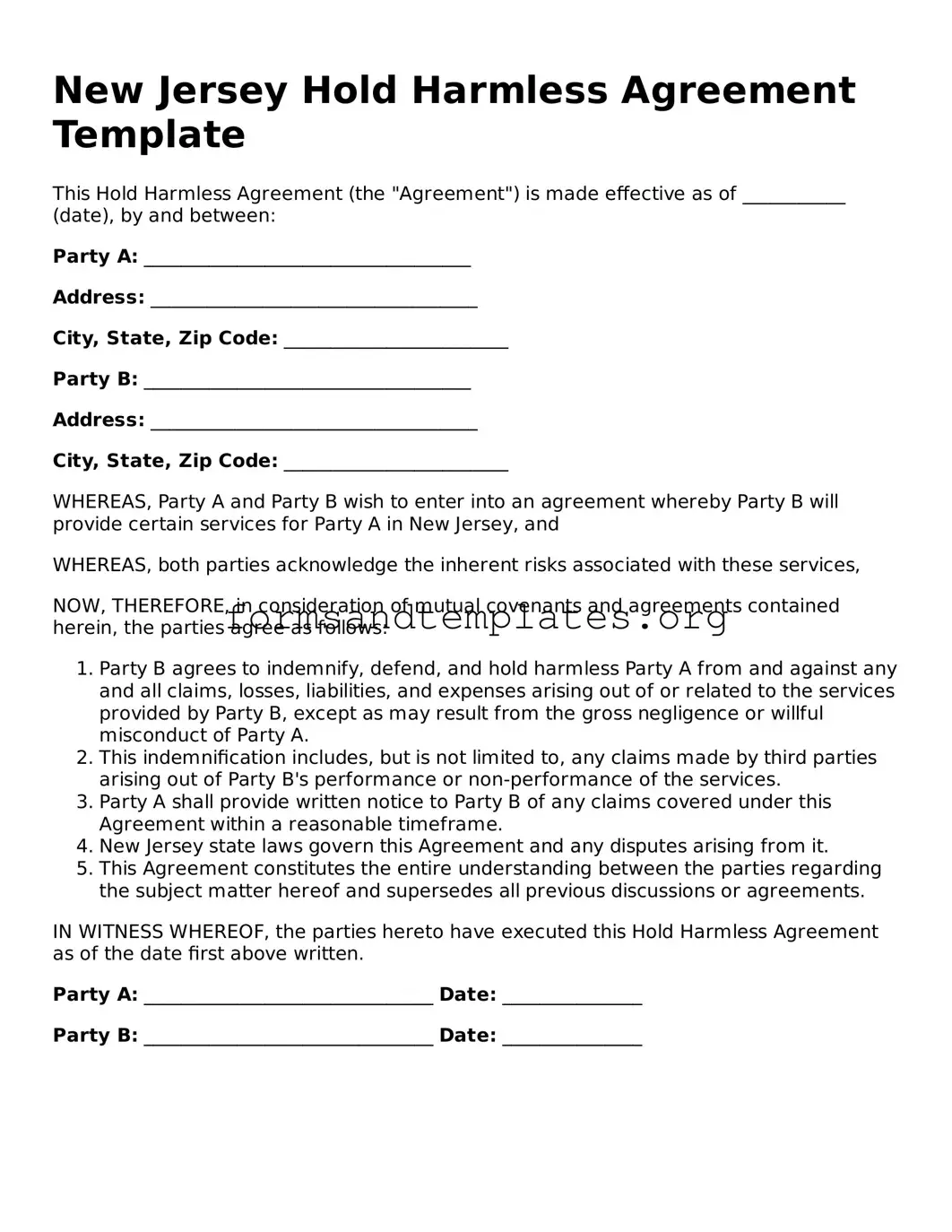New Jersey Hold Harmless Agreement Template
This Hold Harmless Agreement (the "Agreement") is made effective as of ___________ (date), by and between:
Party A: ___________________________________
Address: ___________________________________
City, State, Zip Code: ________________________
Party B: ___________________________________
Address: ___________________________________
City, State, Zip Code: ________________________
WHEREAS, Party A and Party B wish to enter into an agreement whereby Party B will provide certain services for Party A in New Jersey, and
WHEREAS, both parties acknowledge the inherent risks associated with these services,
NOW, THEREFORE, in consideration of mutual covenants and agreements contained herein, the parties agree as follows:
- Party B agrees to indemnify, defend, and hold harmless Party A from and against any and all claims, losses, liabilities, and expenses arising out of or related to the services provided by Party B, except as may result from the gross negligence or willful misconduct of Party A.
- This indemnification includes, but is not limited to, any claims made by third parties arising out of Party B's performance or non-performance of the services.
- Party A shall provide written notice to Party B of any claims covered under this Agreement within a reasonable timeframe.
- New Jersey state laws govern this Agreement and any disputes arising from it.
- This Agreement constitutes the entire understanding between the parties regarding the subject matter hereof and supersedes all previous discussions or agreements.
IN WITNESS WHEREOF, the parties hereto have executed this Hold Harmless Agreement as of the date first above written.
Party A: _______________________________ Date: _______________
Party B: _______________________________ Date: _______________
